A quarter-century after the publication of their landmark book The Northern Forest, two writers return to a changed landscape - and find hope in a conservationist committed to local solutions.
As landscape, the woodlands we call the Northern Forest – 26 million acres of rich, northern hardwood forest stretching from upstate New York to coastal Maine – is extraordinarily young. It took form only 12,000 years ago, when the last ice age’s melt-off left a topography, climate, and soil from which sprouted the region’s signature mix of maple, beech, birch, and ash along with white pine, spruce, and balsam fir.
Even today these vast woodlands, owned for most of the past 150 years mainly in large tracts by forest and paper companies, remain scarcely populated. Only a million live here, mostly in clustered villages or solitary houses hidden away in the woods. Even the commercial centers – the Plattsburghs, St. Johnsburys, Berlins, and Bangors – seldom hold more than 5,000 people. Average density per square mile is less than 15 in nearly half the region. Huge swaths are as empty as they were 10,000 years ago.
The Northern Forest as a human place, however – as a distinct region identified by that name – is just 32 years old, essentially defined in February 1988, after 970,000 acres across the region went up for sale not for timber investment, but explicitly as land on which to build residences, second homes, and north-country getaways. Few people at the time understood the details that had led up to the “Diamond Sale,” as it became known. But many recognized that the transaction signaled a fundamental change in the North Country. Land was becoming a commodity in and of itself, with a value beyond its longtime role as a source of wood. As alarmed conservation groups and public officials mobilized to answer the fast-moving development threat, some started to use the term “Northern Forest” to describe the region and what would emerge as the most significant land use issue in the northeastern United States.
The Diamond Sale riveted attention from Congress, the U.S. Forest Service, the four state governors, and dozens of conservation, outdoor recreation, and forestry and forest products associations, culminating in the creation of a public authority called the Northern Forest Lands Council. From 1991 to 1995, the Council conducted a sort of slow-motion, oft-intense regional town meeting involving thousands of people across the Northeast – environmentalists from Boston and New York, researchers from the states’ universities, Fortune 500 executives, and residents from small towns and mill cities in the forest itself. The Council’s final report, issued in 1995, offered 37 recommendations organized in three broad categories: land conservation, forest practices, and economic development. Both the problems and the proposed solutions spawned enormous anxiety and fierce debate.
“The Northern Forest” also became the title of a book that the two of us – Ober, then a staffer at the Society for the Protection of New Hampshire Forests, and Dobbs, a freelance journalist based near Burlington, Vermont – decided to write in 1993. We knew the issues pretty well, but figured that we should enliven our exploration of those issues “by profiling a few residents.” We soon realized we had it backward – or, as we’d write in the book’s introduction, “that the relationship between people and land was more than a good way to tell the complex story of the Northern Forest – it was the story.”
For two years we spent time with people who earned their livings up north – loggers, mill workers, sawmill owners, tree farmers, foresters, fishing guides – in an economy and culture strikingly different from the ones we lived in only an hour or two away. We saw that these people held a truly astounding store of knowledge, experience, insight, and devotion to their landscape and culture – connections that could come only through long immersion, and which were as unique, valuable, and irreplaceable as the woods themselves. We focused on their voices and stories: Of Chuck Gadzik, a paper-company forester in Maine trying to do industrial-scale logging sustainably. Of the Moffatts, Jim, Joan, and son Steve, who worked the woods with exquisite care on their 700-acre Craftsbury, Vermont, tree farm. Of fishing guide and sporting camp owner Dale Wheaton of Washington County, Maine. Of sportsmen and longtime natives Leo and Don Roberge, of Berlin, New Hampshire.
We started the book with a single, vital question: “Is it possible to protect a great forest without destroying the resource-based economy and culture that both rise from and contribute to the land?” If so, we concluded, it would require a new kind of conservation, based on alliances that combine the influence and resources of committed organizations from outside the region with the wisdom and support of people who live on and draw sustenance from the land. Such an alliance, we argued, was both a huge challenge and a chance, as we wrote in our book’s final words, “to renew not just these woods, but our relationship to them and to one another.”
The many citizens, activists, towns, organizations, and others who took up the Council’s recommendations have had tremendous success in some areas, particularly in the conservation of land and public access. In the past quarter-century, partnerships among varied interests have conserved more than six million acres of forestland – nearly a quarter of the region. These encompass everything from half-million-acre easements on hardworking timberland to small community forests, from footprints-only wilderness areas to vast ATV parks. We think this qualifies as a renewal – the creation of a qualitatively different relationship with this landscape.
Alas, there’s been less success in the widespread use of more sustainable, ecosystem-based forest practices and, more seriously, in rebuilding local economies. Despite good intentions, hard work, and notable progress, many Northern Forest communities are hurting in ways they weren’t 25 years ago. The growing divide in the United States between haves and have-nots has not spared the region, and is frequently felt here in ways closely tied to tensions between locals and outsiders. The cultural gap between those of privilege and those without remains as stark as ever, as do the inequities of wealth, income, power, and autonomy. These gaps weaken not just the region’s communities and social fabric but its ability to build the kind of lasting alliances that our book called for between outside power and inside wisdom. To find the space between.
On the following pages we tell the story of one Northern Forest resident who is seeking that space: 38-year-old reporter, activist, dogsled-racer Sally Manikian, who moved from a town on the Massachusetts border to the Androscoggin Valley in the heart of the Northern Forest. In her story – and in others like her whom we have met in the quarter-century since finishing our book – we find hope for a region and its unique way of life.
Refuge
Like many in the Northeast who love the outdoors, Sally Manikian formed her first strong bond to the Northern Forest as a seeker of refuge. She grew up in Atkinson, New Hampshire, about two hours south of the Northern Forest’s wiggly unofficial southern boundary. Her family rarely traveled north. They leaned instead toward beach or RV vacations, partly because two of Manikian’s three younger siblings had severe developmental disabilities that made more demanding ventures difficult. One high school summer in the mid-1990s, though, Manikian went on a 10-day Appalachian Mountain Club Teen Wilderness Adventure trip in the White Mountains. She had a great time. But once home, she didn’t feel the place pulling her back.
At the time – for a long time – she was more interested in academics than hiking, and was constrained by familial duties as well. A ravenous reader and focused student highly encouraged by her parents, who came from blue-collar backgrounds, she excelled in high school and then earned a bachelor’s in history and political science at the University of Dublin, Ireland, where she would finish second in her class. In Manikian’s second year there, her mother, Jamie Stephenson, told her that she had been diagnosed with multiple sclerosis a decade before, but had kept it to herself until Sally was grown. Three years later, when Manikian was near the top of her law school class at the University of California, Davis, her mother told Sally she’d just been diagnosed with ALS as well, and had been given five years to live. Manikian, who had already decided to leave law school for a year to get a master’s degree in social science and economics in postcolonial politics at the University of Wales, heeded her mother’s urging to do so. Returning home from Wales in the fall of 2006, she found her mother doing pretty well, really, for someone with two debilitating conditions – and insistent that her daughter go out and find work and a place she liked and live there on her own.
It was then, seeking refuge, that Manikian returned to the mountains. She took a summer job as a field-crew supervisor for the Appalachian Mountain Club’s White Mountain operations – a job close enough to come home from on weekends and sufficiently impermanent to ditch altogether if her mother needed her full time.
She liked the job okay. With the mountains she fell in love. The glaciated peaks and deep, green valleys gave her the mental space to fully feel and then start to sort through the waves of grief, guilt, regret, panic, and acceptance emitted by her mother’s coming death. When summer ended, Manikian latched on as a winter steward at one of the AMC’s mountain huts, near the treeline 3,000 feet up, with snowbound forest below and a star-stuffed sky above. The place’s wildest aspects entranced her: the tundra and whistling winds; the black rivers flowing between snow-white banks; tracks of fox, bobcat, and fisher; the jangly, thumping thunder of dogsled teams running through gently falling flakes. The setting provided a much-needed sense of remove, an indifferent healing purity to counter the cruel, crushing perversity of her mother’s fate. In 2007, she repeated the cycle, working another AMC field job that summer and heading straight back up come winter. This time she tended a cabin called Gray Knob that the Randolph Mountain Club, a far smaller, amateur outfit, had built at the seam between taiga and tundra northwest of Mount Adams. The place was small, cold, remote, seldom visited. She wanted to never come down.
She had to, of course: for supplies, for her mom. Every two weeks she’d drive home to absorb and try to assuage her mother’s decline. Sometimes, midweek, she’d return in response to urgent text messages that rattled her sense of refuge. She knew it wasn’t sustainable, this split between a wild, solitary life and a constrained one bound to duty. She never felt fully present in either life: the other place always pulled. As that second winter at treeline eased and sent snowmelt into the valleys, she decided to follow it. “I came out,” she says now, laughing. “I wanted to be among people again.”
Yet she did not leave the mountains. She just wanted to live among them near other people, rather than atop them, alone. So she descended not south but north, down into the Androscoggin Valley and the small city that for 150 years had been the commercial and population center of both the valley and of Coos County.
The changes in the Northern Forest economy had hit Berlin hard. The most devastating blow had come in 2006, with the closing of the city’s long-troubled pulp and paper mill, which had run almost nonstop since the Civil War. For most of its history, the mill had distinguished itself as one of the nation’s most productive and important paper mills – and the city’s biggest source of jobs, income, taxes, and identity. In the 1920s, the mill had owned a staggering 3.75 million acres – an area larger than Connecticut – to ensure a perpetual wood supply. It paid union wages and benefits that made its workers – 5,000 of them at its peak, working mill and woods – the best paid in the North Country. The smoke emanating from its stacks – a product of the chemical process that reduced wood fiber to pulp – spread a sulfurous aroma over the entire area; residents called it the smell of money. Now the place stood silent, its hulking structures dominating the riverfront – an emblem of the losses, tensions, problems, and possibilities the Northern Forest Lands Council report had articulated a dozen years earlier. How would the mill and logging jobs be replaced? What would happen to all those woods? Who’d get to own and use them? Who’d get to decide?
These questions were still simmering throughout the Androscoggin Valley when Manikian descended from the mountains looking for work that would engage (as she would later write) her “passion for authenticity and broken spirits.” In town to poke around, she ran into a friend who was a reporter for the Coos County Democrat, a newspaper founded in 1838 and quite possibly the nation’s oldest and feistiest northernmost newspaper. Manikian learned that one of the Democrat’s sister papers, the Berlin Reporter, was hiring. Meet me at the county commission meeting tonight, her friend said; they’re considering a conservation proposal. You could write it up and I’ll give your piece to the editor, see if they hire you.
At the meeting, Manikian watched as Nancy Bell, a Vermonter who worked for The Conservation Fund, sought the commission’s support for a project the Fund wanted to do to protect some land for sale just east of Berlin. It was a lot of land, recalls Manikian, “pretty much the whole town of Success,” that if not protected might get bought and cut into building lots and developed. The meeting’s pivotal exchange – pivotal in Manikian’s story, pivotal eventually in both her and Bell’s careers – came when county commissioner Paul Grenier told Bell why he was unlikely to support her proposal. “We don’t want any of you conservationists coming in here and telling us what to do,” he said, expressing a sentiment that surprised no one. “You’re right,” said Bell. “Here’s my phone number. I want to hear more.” Which surprised everyone. Manikian included the exchange in the piece she submitted the next day for the Berlin Reporter. A few weeks later the Berlin Reporter hired her as its sole reporter.
The new job put her directly in touch with authentic lives and broken spirits, both. She wrote seven to ten stories a week. Upbeat, small-town accounts of parades, graduations, local heroes, and businesses and clubs; moose season, duck season, deer season, turkey season, bear season, and fishing derbies; bald eagles and (separately) stray cats. Grittier stories on charitable meal services, fires, the city’s struggle to deal with dozens of homes and buildings abandoned by their owners, and other woes of under- and unemployment; a “hunger banquet” that raised awareness of social inequalities by randomly seating some guests at tables with white tablecloths, candles, and wait service while others had to sit on the floor and serve themselves; strained budgets for schools, parks, roads, and other public services.
Many of the issues were magnified by an inequitable state tax system and lack of social safety nets. Nearly every problem of working-class rural America was felt keenly here. Manikian took her reporting seriously. “I wanted to understand this town. And as a reporter, you have this role, almost like that of the postman or the school district super. It was clear by the way people treated me that while this Sally person wasn’t necessarily someone, that reporter was. I was given a lot of trust.”
She could not help but feel the town’s pain.
Before long, she was spending many of her off-hours serving on two boards: the Androscoggin Watershed Council, an environmental nonprofit, and the Berlin Industrial Development and Park Authority, or BIDPA, which was tasked with the symbolically fraught mission of finding the best way to repurpose the aging, idle paper company site along the Androscoggin River.
BIDPA’s members, too, took their mission seriously, but with a sometimes-crippling desperation. To Manikian, BIDPA and most of Berlin’s other leaders seemed all but paralyzed with what she dubbed a mill mentality, “a fixation on finding One Big Solution” that would somehow quickly replace the jobs and sense of community that the mill and its logging economy had provided for decades. Anything that sounded big, she says – prisons, museums, greenhouses, biomass plants, massive all-terrain-vehicle festivals – would get chucked at the wall to see if it would stick. A fancy, local-greens greenhouse proposal almost held, but slid off when members discovered it would pay poorly and that literally nobody local could buy the produce, because the business plan was to ship every leaf and stem out of the county to posh restaurants in distant towns.
A modest Northern Forest heritage museum was built and became a source of pride, if not many jobs. Three prisons stuck and were eventually built, but only the federal prison paid well.
In conservation conflicts, on the other hand, she was often troubled by the exclusivity and presumption that she recognized from some of the crews and hikers she’d met in her time with the AMC: a blindness to the needs of locals who lived near the trails and to the power and intensity of their different connections to the same land. This blithe dismissal of so many of the area’s residents – this unseeing of them – reminded her of the exclusion suffered by her brother and sister, and her mother, too, as her disorders became more obvious.
It also reminded her of the postcolonial dynamics she had studied while in Wales – the way that largely unrecognized differences in culture, expectations, values, agendas, and power so often made conflict inevitable and understanding elusive. In her master’s dissertation she had written about how the bridging of such gulfs often depended on the presence of a “go-between” – someone, Manikian says, who spoke both languages, understood both cultures, and respected and was respected by both sides.
In the spring of 2009, she realized she wanted to try to fill that role in the Androscoggin Valley: to be a go-between.
The Go-Between
That April, Manikian gave the Berlin Reporter notice so that she could find work changing things rather than reporting them. Over the year that followed, she juggled eight different jobs, working another summer gig for AMC, teaching history at Plymouth State University, helping out at a Berlin-based antipoverty agency called Tri-County Community Action Partnership, and giving dogsled rides for Muddy Paw Sled Dogs. That December her mother told Sally and her siblings that she would soon be ready to stop living. Four months later, on the first day of spring, 2010, Jamie Stephenson had a small ceremony at her home with her children, had them disconnect her respirator, and died peacefully. A few months later, having sold the Atkinson house, Sally and her siblings would buy a house and barn in Shelburne, just down the Androscoggin from Berlin, big enough to hold all three of them as well as a dogsled and a team of dogs to pull it.
In the meantime, in May, Manikian had been hired by the AMC, full time at last, as a Backcountry Resource Conservation Manager. As manager of half the club’s backcountry campsites she oversaw the design, refurbishing, and replacement of shelters and the hiring, training, and supervision of a 16-person backcountry staff. She also coordinated the work of the Mahoosuc Initiative, a 12-partner project to develop the recreation-and forest based economy in Maine’s Mahoosuc region, just east of Berlin; managed a project in Berlin that deployed snowmobile riders, local artists, and at-risk kids to construct trail systems on two local peaks that lacked them; facilitated cross-department brainstorming meetings and retreats; and created or ran AMC-wide leadership, inclusion, and diversity programs.
The AMC was upping its game. Back in the early 1990s, the Boston-based organization had alienated many in Berlin by intervening in a federal relicensing of five dams on the Androscoggin River that were essential to the paper mill at a time when the mill was already struggling. Despite alliances the AMC had built with riverside residents and other locals, a handful of local officials managed to paint the group as elitists insensitive to local needs. After the dams were approved, property-rights advocates and others turned the tables by weighing in against the U.S. Forest Service’s re-permitting of the AMC’s hut system – the club’s flagship operation and most visible and profitable work. The message was obvious. You mess with our livelihood, we mess with yours.
By the time Manikian returned to the AMC in 2010, however, the club, led by Walter Graf, an AMC senior executive who lived in the North Country, had begun to turn things around by listening better and contributing to programs concerned with local social and economic issues, including some of the programs Manikian was involved with. Elsewhere in the Northeast, the club had led an effective ground-up strategy to conserve 70,000 key acres in the “100-Mile Wilderness” between Baxter State Park and Moosehead Lake in Maine – the project combining outdoor recreation, green-certified responsible forestry, and community partnerships, including with local schools.
Meanwhile, Manikian was meeting and learning from people and organizations trying to do similar things at different scales and along different avenues. Like the AMC, most of these outfits were essentially pursuing goals recommended by the Northern Forest Lands Council a decade before: protecting land, advocating sustainable forestry, and trying to transform a rural economy from a primarily extractive resource industry to something else. The Council’s work had made a difference. Its biggest impact may have been in the standards of engagement it had insisted on. Its emphasis on pulling together people of all points of view to think cooperatively about the region’s future was taken up by regional collaboratives, conservation groups, funders, and symposia. Many organizations genuinely came to understand the need to ally with residents, rather than just “engage the locals” long enough to get a project approved. Doubtless few of these activists viewed things in a postcolonial framework, as Manikian did. But many were seeing the necessity to work with locals at a more granular scale – with more equitable balance of power – to help foster healthy communities and economies as well as to protect land.
Perhaps the most deliberate example of this double-barreled approach was the creation of the Northern Forest Center, based in Concord, New Hampshire. Founded in 1997 by the former head of policy at the AMC, Steve Blackmer, the Center invested in celebrating the region’s heritage and culture; advocating and implementing projects that started with economic development rather than regarding that as an afterthought; and helping the region continue to think of itself not as disparate communities separated by town, county, and state lines, but as a distinct place.
By 2010, the Center was developing innovative programs helping communities to create and attract forest-based businesses; improve infrastructure and reward sustainable forestry by installing sustainable wood-pellet heat systems in both public and private housing, including in Berlin; and advancing the creation of town-owned, town-managed community forests, which proved to provide economic, environmental, and social benefits while conserving forests. By the late 2010s, the Center was investing directly by purchasing and renovating downtown buildings in Millinocket, Maine, and Lancaster, New Hampshire. And when they worked with or wanted to get to know a town or a smaller local partner, the Center’s representatives seldom asked them to travel to their office, as many groups tend to do; the Center went to them.
“And not just to be nice,” says president Rob Riley. “We go to them because that’s the only way to see the place and get a feel for its challenges and possibilities.”
The Society for the Protection of New Hampshire Forests, another Northern Forest conservation group and one of the oldest and largest, was aligning with local landowners and municipal officials to block Northern Pass, a massive proposed transmission line that would gash across 40 miles of forest and mountains in Coos County to connect HydroQuebec power plants with consumers in southern New England.
The group that most intrigued Manikian, however, was The Conservation Fund – the Boston-based outfit whose northern New England acquisition director Nancy Bell had made such an impression on Manikian at the Coos County Commissioners meeting Manikian had written up for her Berlin Reporter audition piece. With a style combining a forthright, tenacious activism with a killer smile and a determination to patiently listen to and truly understand residents who felt threatened by conservation projects, Bell had orchestrated some of the most notable Northern Forest conservation deals of the early 2000s, including a politically, logistically, and culturally complex project that conserved – mostly as working forest – 133,000 acres across three states that Champion Paper had fiercely overcut before putting it up for sale. [See Northern Woodlands, Summer 2019] Manikian thought the Fund was doing some of the most innovative work in the Northern Forest. And she admired the combination of support and freedom the group gave Bell in how she went about things. So she was thrilled when in 2016 the Fund asked her to take Bell’s place.
Nancy Bell would be a hard act to follow. But Manikian would have and still has Bell, who remains connected to the Fund, to call on for advice or guidance. And after years of scrapping from one job to another (one year she had eight W-2s), she was thrilled at the prospect of the tools, funds, and freedom she’d have at hand. She took the job.
Like Bell, Manikian enjoys the sometimes-slow, consensus-building projects the Fund is known for – and the leeway to close a deal quickly when needed. She favors projects that answer her long-running concern about public access and traditional uses like hunting, fishing, and hiking – and dogsledding, a hobby she took up seriously after settling in Shelburne in 2010.
She particularly likes to help towns create or expand community forests. Community forests are simply woodlands owned and managed by the citizens of cities or townships, usually for a variety of ends. The community-forest movement, vigorous in pre-industrial Europe but largely dismantled there during the Industrial Revolution, began in the 1970s a slow global renaissance that accelerated first in Asia and South America and in the past 20 years or so in Europe. U.S. conservation organizations big and small, including The Conservation Fund, are increasingly using them as a prime tool.
As town-owned holdings, community forests by nature give primacy to locals in agenda and decision-making. Manikian’s role is to help the communities find money, identify possible trades or land-swaps to acquire desired forests, facilitate community conversations, forge management plans, and navigate a complex funding and regulation landscape.
Just last year she did all these things to help the town of Gorham, Berlin’s neighbor to the south, double the size of a 2,000-acre forest the town had bought in 1936. Manikian started working on the project as soon as she started the job in 2016. While a few finishing bureaucratic touches remain as this article goes to press, the project’s most crucial test – getting the town’s support – came up for a vote in the 2019 Gorham town meeting, where Manikian, slogging through a case of pneumonia and dispirited after having to withdraw the week before from a major dogsled race held each year in Fort Kent, Maine, faced the full town for the first time. She gave a short presentation, walking them through the funding the Fund was offering and how it would secure the land for the town’s future. When she finished, townspeople gave her a standing ovation and voted unanimously to accept the funds and spend additional town money to add to and conserve the entire tract. When she sat back down, two elderly women seated in front of her held up the map and said, “This is a big deal! Thank you!”
To Manikian the project is emblematic both for the town’s participation and for the biggest single kink that threatened it: The 2,000 acres was bisected by an ATV trail, and ATVs (all-terrain vehicles) had become one of the Northern Forest’s fastest-growing revenue sources and touchiest civic issues. ATV use across the region has exploded in the past two decades, especially around Berlin, which became a prime ATV destination when the state bought 40,000 acres of hard-cut timber and developed them into one of the nation’s largest ATV parks. Stores that once catered mainly to fishing and hunting devotees now focus on ATVs, helmets, and gear. In Gorham and other towns south of Berlin, machines can seem to be everywhere on weekends, in gas stations, driveways, and restaurant and hotel parking lots filled with pickups pulling huge trailers.
To many visitors and residents, they’re a noisy, noisome curse. To many businesses and to many locals who’ve long looked to machines to access country in ways they couldn’t on foot, they sound and smell like money and freedom. Environmentalists are split. Many – probably most – object to ATVs’ well-documented impacts on erosion and plant life, carbon emissions, and most especially, to the noise that confuses and disrupts wildlife, bothers hikers and other recreational users, and pretty much drives some people crazy. The growing move to electric engines will reduce the pollution and noise but leave other effects unchanged.
All this made the ATV trail on the proposed community addition a flash point. Because of these problems, some of Manikian’s friends were surprised that neither she nor the Fund ever suggested that Gorham close the ATV trail as a condition of sale.
“I can see how it seems weird,” says Manikian, who describes herself as agnostic on ATVs. “We’re The Conservation Fund. We should be anti-ATV, right? Because we have the word conservation in our name. But that’s not the role we’re here to play. I’m a project manager. I’m here to facilitate the future of those around me.”
For Manikian, such things are all about context and a community’s values, and in this case, she could accept ATVs. “It’s a good project,” she says. She objects to the notion that any one outdoor activity can be morally more acceptable than another. Whether one hikes, snowmobiles, skis, or hunts, she says, “We all have impact. We’re all heavy on the land. I’ve got no patience for any user group saying they’re better than the other.”
Manikian worries that much of the conservation community still has its own mill mentality – a gravitation toward deals shaped not by local concerns but by the structure and relationships of conservation organizations, the constraints imposed by funding sources, and the transactional nature of land and easement purchases. She worries that the relative ease of simple conservation deals on big tracts will tempt her and the Fund into the sorts of high-acreage, fast-action projects that can catch locals by surprise. She worries about the distance she’s already feeling from town concerns; even that she’s starting to talk and dress like – well, like someone who works in a conservation office.
“Look at me,” she said to us when we visited in her office just west of Gorham, as she touched the understated, elegant, cowl-neck black sweater she was wearing. “I never even used to own anything like this.” She laughed and said, “That’s why I like dogsled racing. You get to wear woods clothes and hang out with a different crowd.”
Atop the insights and perspective Manikian gained as a reporter, her time hanging out with dogsledders, snowmobilers, hunters, and trappers deepens her appreciation for the diversity of ways people connect with the landscape. Though they can seem foreign to someone from Boston or, say, Atkinson, the local connections are rich, intense, and in their own way as tender as those of any hiker, angler, botanist, or birder. She wants to work with her neighbors’ voices in her mind as much as those of people she knows from conservation conferences or the high trails of the White Mountains.
Nancy Bell, who is often in Manikian’s mind, stresses that doing this work well requires truly understanding local concerns. It also requires that you have at the heart of any project a core objective that you must and will not sacrifice. Manikian essentially wants to do the same – but to make sure the core concerns include not just conservation goals, but social objectives such as inclusiveness, respect for local culture, and equity in decision-making. She doesn’t just want a conservation consistent with social justice. “I want to use conservation,” she says, “to address social justice.”
She recognizes this can seem an odd idea, and she knows it will be hard. Yet she’s showing that it can be done, even or perhaps especially if that means helping a town buy and conserve a piece of land and then ride ATVs on it.
She’s not one to travel a given path the easy way. For actual transport, for instance, she prefers dogsleds to ATVs. This past March she took her sled and dogs once again to Fort Kent, and on the same course where she’d halted in exhaustion the year before, became the first woman to win the 100-mile Can-Am dogsled race.



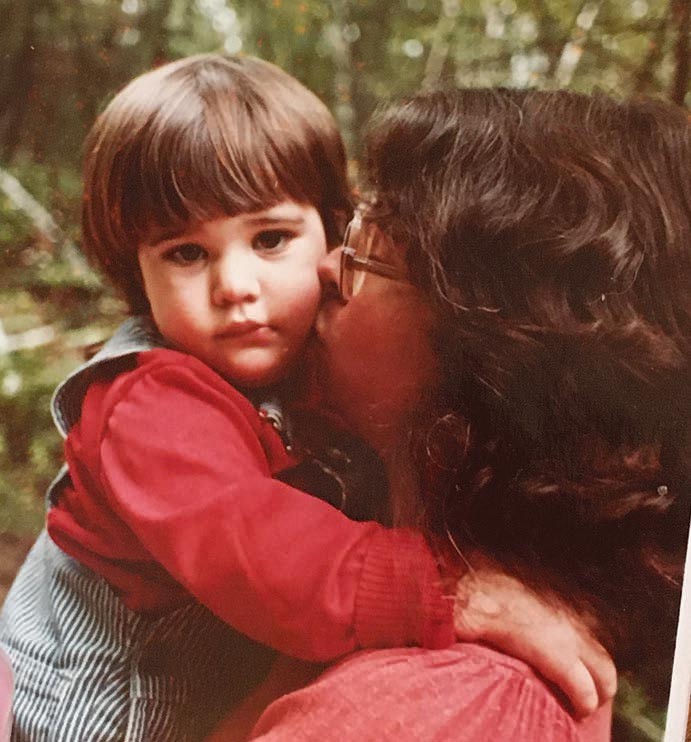
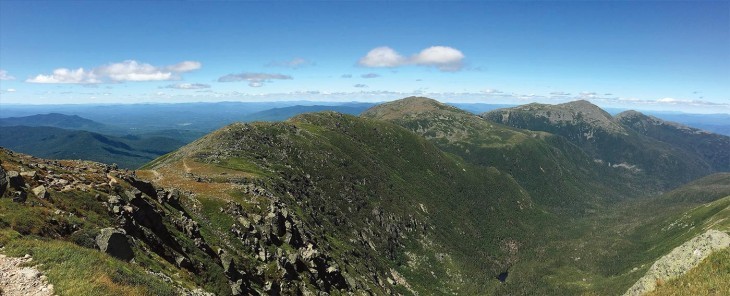
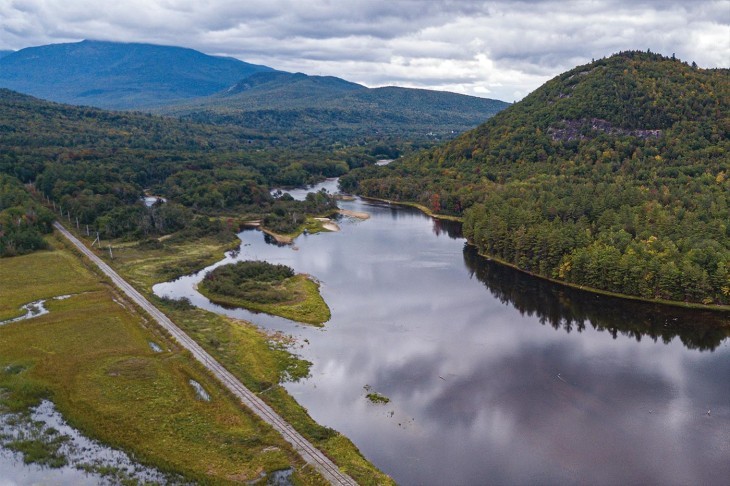
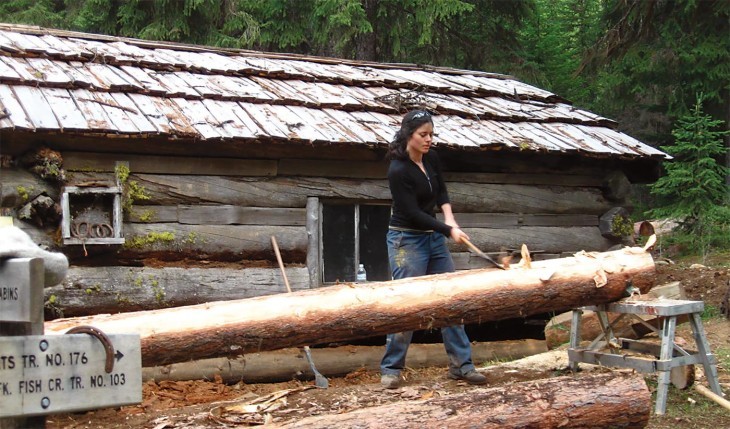
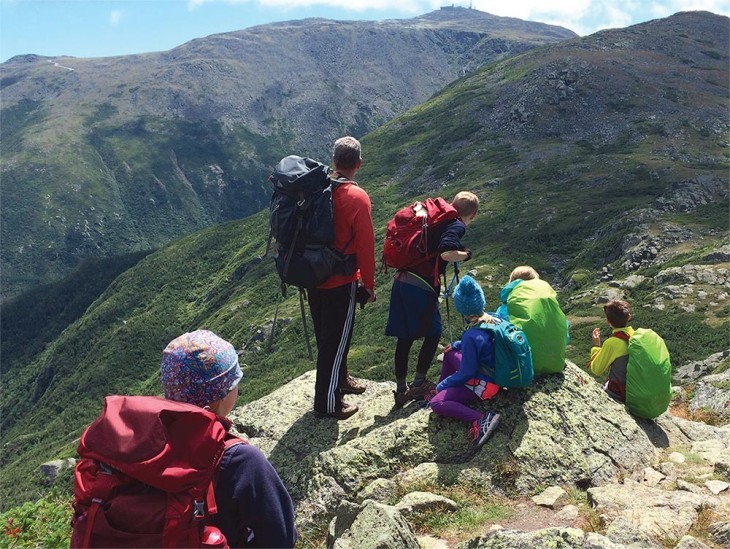
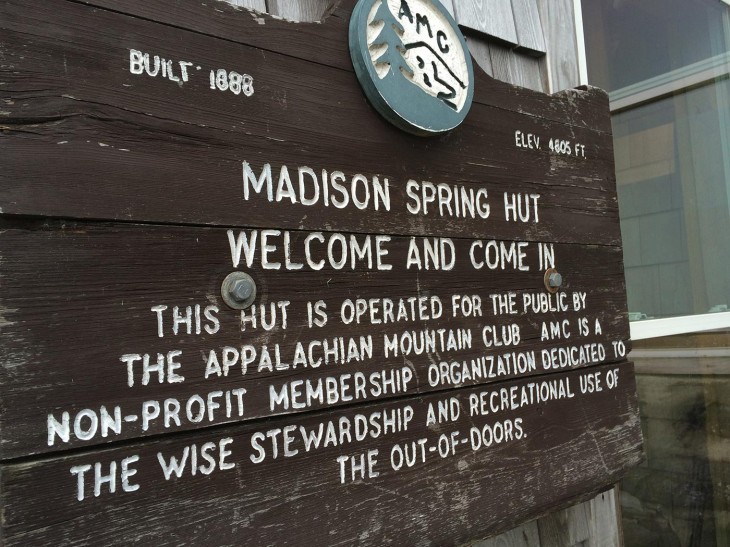
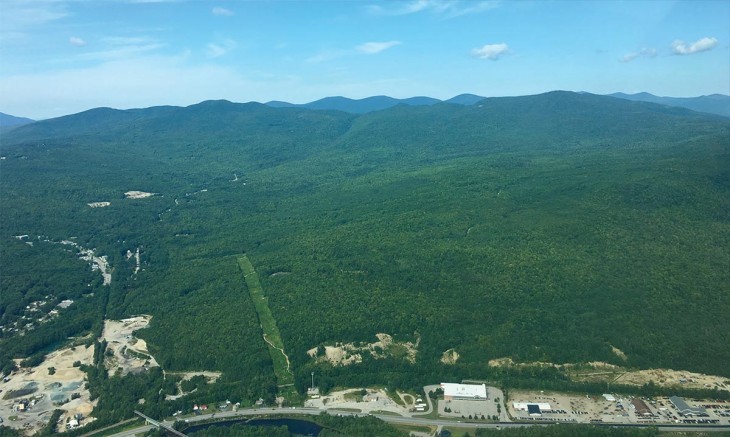
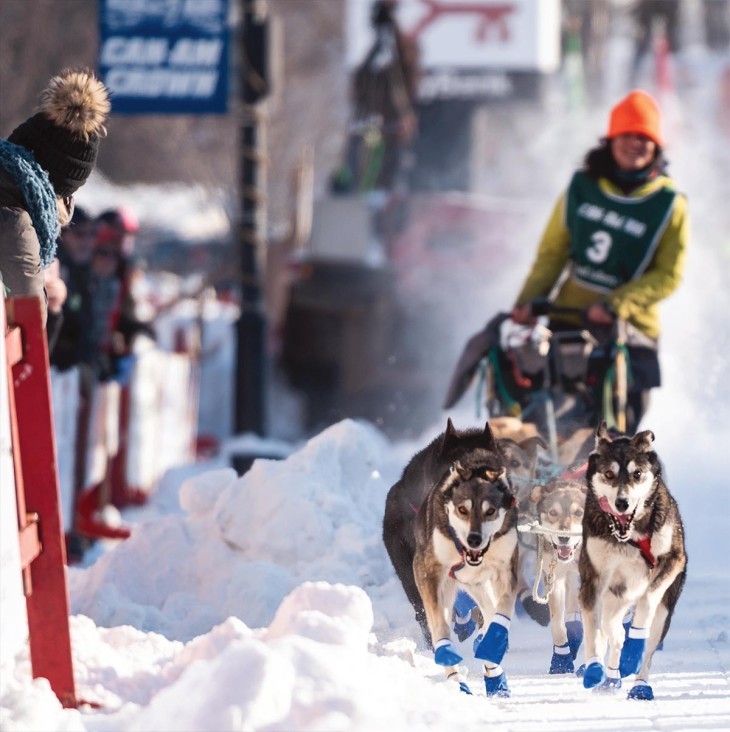
Discussion *